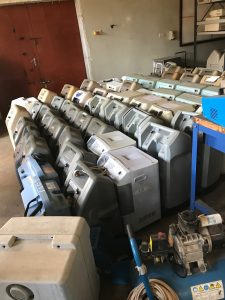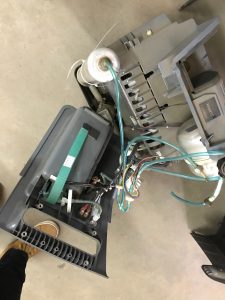
Growing up, I was really interested in scientific pursuits and enamored to be a research scientist, solving a problem and furthering the frontier of knowledge in a field. While my interested have shifted somewhat, I have always enjoyed using a logical and methodical method to solve problems systematically; this is one of the reasons I am pursuing an engineering degree and want to continue on to medical school after university. This week however, I realized before that stage can even be reached, there is an arguably more crucial step that I had never considered: needs finding and problem definition. When I have conducted research or even worked on a project in college and in high school, I have always taken the problem at face value. Problem? Cancer affects millions of people. What’s next? Theorize and research. Problem? I don’t get enough sleep everyday. What’s next? Theorize and research. But what if the problem is not a problem?
Sometimes problems change, are ill defined, or are problems in principle but are not common or just don’t happen. While the two problems I have listed above are indeed valid and reasonable problems (and obviously the former is much more important and pressing than the latter), for others it’s not as simple. This is the case for my Rice 360 project, which is finding a solution to protect the compressor seals in an oxygen concentrator from the accumulation of abrasive dust particles. While touring neighboring hospitals in other districts around Malawi and interviewing nurses, engineering technicians, and the matrons of the ward, the majority verdict was while dust can build up and wear down the seals, this just doesn’t happen. Furthermore at three of the four hospitals we visited maintenance is done frequently enough that other parts of the concentrator usually fail first, whether it is needing to replace the disposable bacteria and dust filter, burst tubing, or electrical problems caused by electrical surges. Issues with the compressor seals really do not occur until after 5 years of almost continuous use, and even then overworking and overheating usually are much larger causes for this failure.

It is entirely possible that this still is a problem; technicians speak from what they have seen or heard while working at the hospital and something like dust in the compressor can easily contribute to overheating by increasing the frictional forces or be misdiagnosed as other problems, especially since this only occurs in very old concentrators. Furthermore, another group working on a similar project received conflicting answers about dust from the same technicians. But what I have gathered over the course of the past week is that the only way to know if a problem exists is to personally determine it. Tomorrow my group will travel to Queen Elizabeth Central Hospital (Queens) and discuss with more engineers in order to definitely determine whether my problem truly is a problem. Only then can I go back to what I know best, theorize and research.